
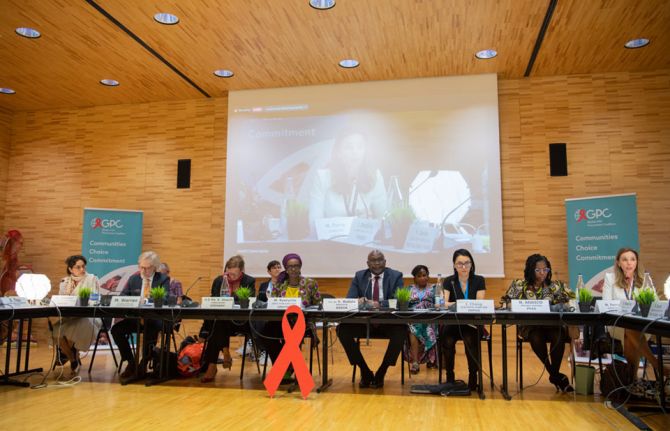
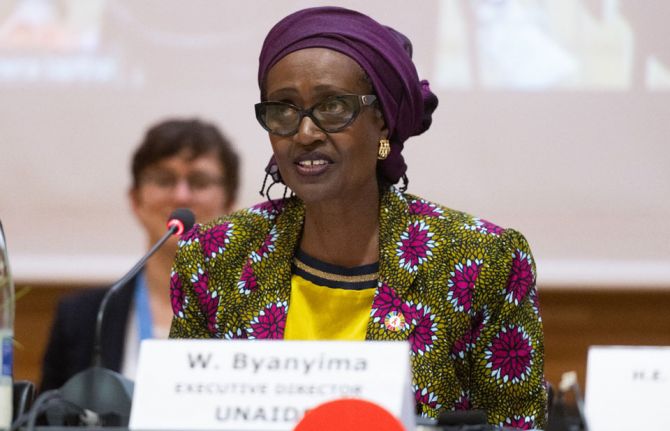
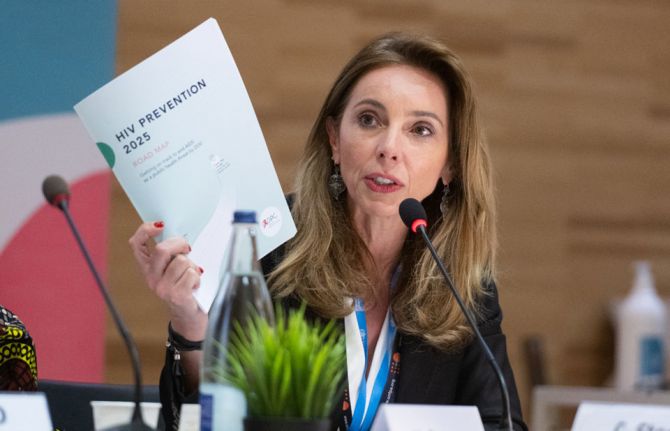
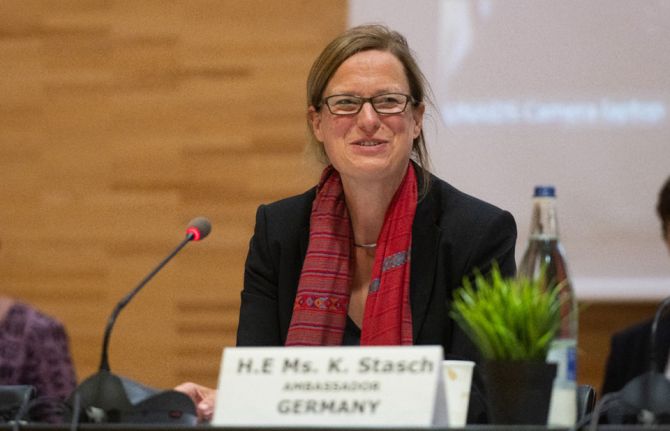
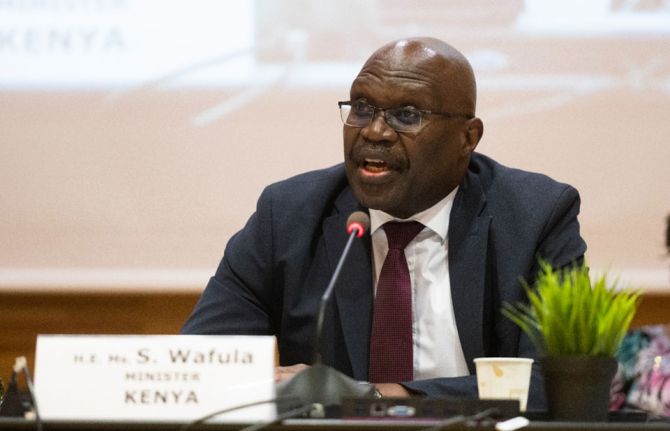
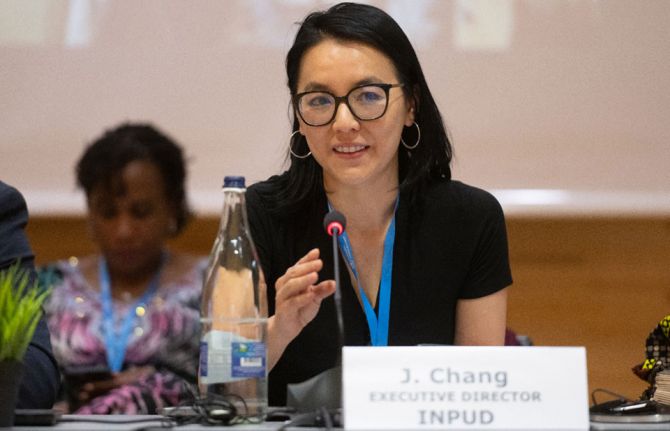

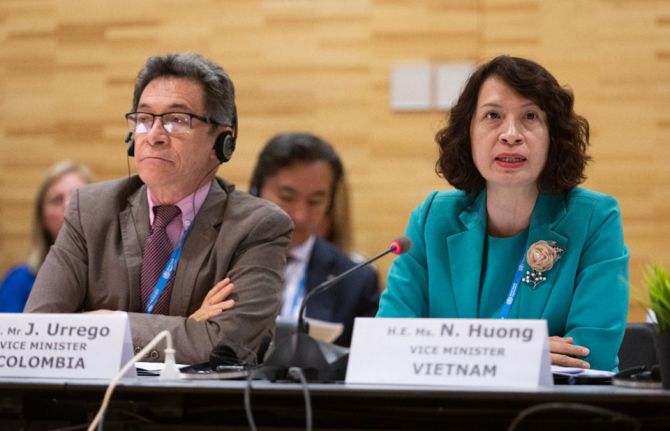
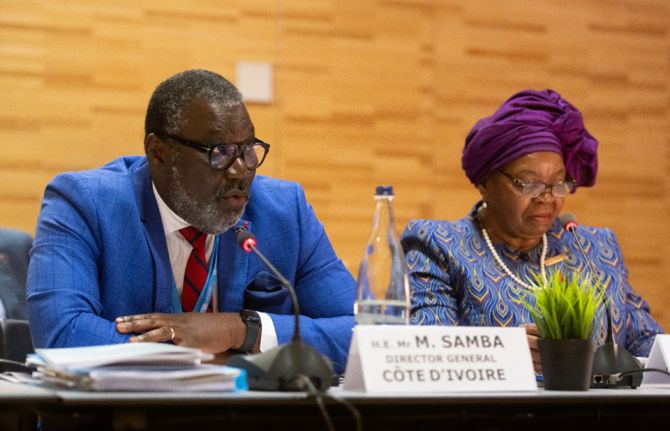


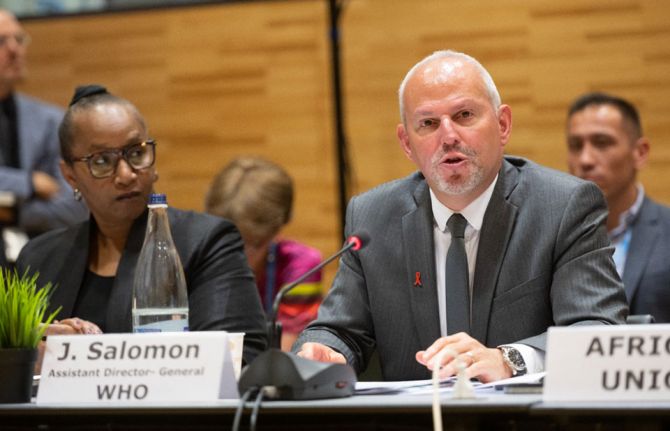
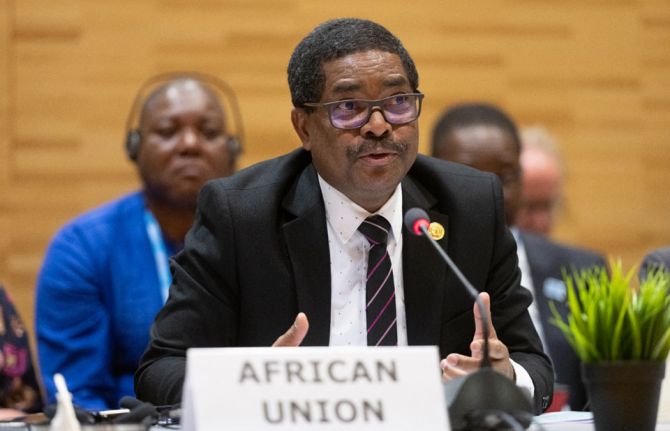
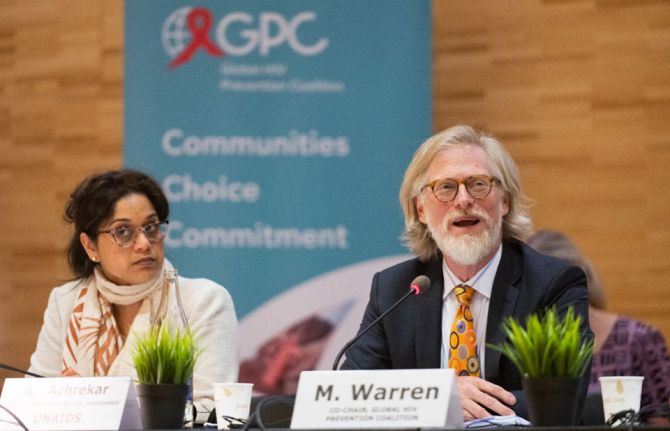
Press Release
UNAIDS alerts countries to an unprecedented opportunity to stop new HIV infections, end AIDS and prepare for future pandemics
24 May 2023 24 May 2023GENEVA, 24 May 2023—UNAIDS urges countries to take full advantage of new opportunities to step up funding, expand new and proven HIV prevention technologies and remove barriers to HIV services. Taking action today will boost progress to end AIDS and respond to current pandemics and pandemics of the future.
On the side-lines of the 76th World Health Assembly, Ministers of Health joined global health leaders and experts at a high-level event of the Global HIV Prevention Coalition. Hosted by UNAIDS, the event was called to increase political commitment, address policies and laws that drive inequalities and pandemics, secure additional funding and ensure effective HIV programming is implemented at scale.
“Never has the opportunity to prevent HIV been greater,” said Winnie Byanyima, Executive Director of UNAIDS. “We have tools and technologies—none of which are being made available widely enough. Doing justice to this unique opportunity requires bold leadership and renewed investment into HIV prevention to provide effective prevention choices to all who need them.”
UNAIDS In Danger report showed that in 2021 there were 1.5 million new HIV infections globally, more than three times the target of 500 000 at the end of 2021. The 2025 target is to reduce new HIV infections to less than 370 000. In order to reach that target, countries will need to attain an 82.5% reduction from 2010 as outlined in the 2025 HIV Prevention Roadmap - a 10 step how-to- guide to reach the 2025 targets.
“This is the best chance we’ve ever had, in probably the entire history of the AIDS pandemic, to reimagine HIV prevention and to do it with equity and with impact,” said Mitchell Warren, Global HIV Prevention Coalition, Co-chair.
Of the 28 priority countries identified by the Global HIV Prevention Coalition, new analysis of data from UNAIDS, shows that five countries (Cote d’Ivoire, Zimbabwe, Malawi, Lesotho and the Islamic Republic of Iran) reduced new HIV infections by more than 61% from 2010 to 2021—the level of progress needed. A further twelve countries recorded a reduction of more than 40%.
Data also show however, that new HIV infections are rising in 38 countries, some with sizeable HIV epidemics. This worrying trend calls for accelerating prevention and expanding the Coalition to these countries.
According to the 2022 UNAIDS Global HIV Prevention Coalition country scorecards, dedicated HIV prevention programmes for adolescent girls and young women only exist in 41% of districts with moderate to high HIV incidence in sub-Saharan Africa.
The scorecards also show that in Coalition focus countries with available data, 63% of sex workers, 49% of gay men and other men who have sex with men and 36% of people who inject drugs were reached with HIV prevention services in 2021. High stigma in mainstream health service delivery, criminalization of key populations, harmful law enforcement practices, gender and structural barriers remain major obstacles to access HIV prevention services for key populations.
“Evidence and rights-based HIV programming, that meaningfully involves key populations, is simply not being sufficiently invested in and brought to scale. For example, when it comes to people who use drugs, only 2% of us live in countries with high coverage of basic harm reduction services,” said Judy Chang, International Network of People who Use Drugs. “If we fail to make investments based on public health rationale, but do so based on so-called moral agendas, we will fail global health. We need countries to invest fully in HIV prevention and community systems.”
Access to condoms, PrEP (medicine to prevent HIV) and voluntary medical male circumcision remains highly uneven. Only Uganda and Zimbabwe met more than 80% of the condom distribution need. Data also suggests declining condom use in several countries after 2015 showing an urgent need to halt and reverse declining trends in condom use. Although uptake of PrEP increased rapidly in the 28 focus countries, absolute numbers remain very low—1.5 million users at the end of 2021 against the global target of more than 10 million.
The number of men undergoing voluntary medical male circumcision for HIV prevention (which studies show prevents HIV by up to 60% for men) was consistently more than 4 million per year from 2017-19, declined by 40% in 2020 and in 2021 remained at 2.8 million with only Ethiopia, Tanzania and Zambia meeting annual targets. These programmes require renewed focus in countries to meet 90% targets set out in the Global AIDS Strategy 2021-2026.
This data analysis highlights both encouraging successes and persistent gaps in national HIV prevention programmes. The reality of success in several countries paired with new available technologies creates a unique opportunity for concerted action to stop new HIV infections, end AIDS and strengthen pandemic preparedness and response.
UNAIDS
The Joint United Nations Programme on HIV/AIDS (UNAIDS) leads and inspires the world to achieve its shared vision of zero new HIV infections, zero discrimination and zero AIDS-related deaths. UNAIDS unites the efforts of 11 UN organizations—UNHCR, UNICEF, WFP, UNDP, UNFPA, UNODC, UN Women, ILO, UNESCO, WHO and the World Bank—and works closely with global and national partners towards ending the AIDS epidemic by 2030 as part of the Sustainable Development Goals. Learn more at unaids.org and connect with us on Facebook, Twitter, Instagram and YouTube.
